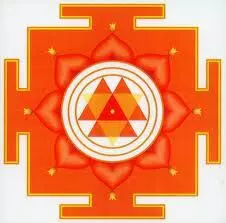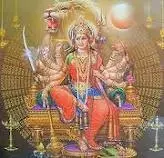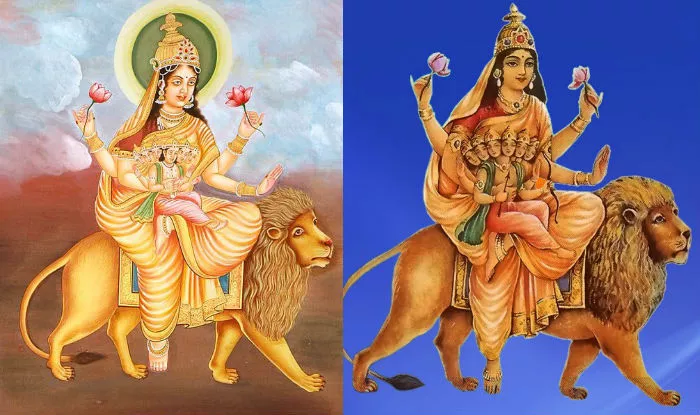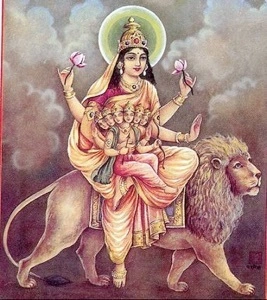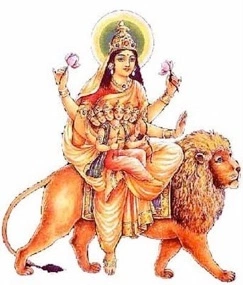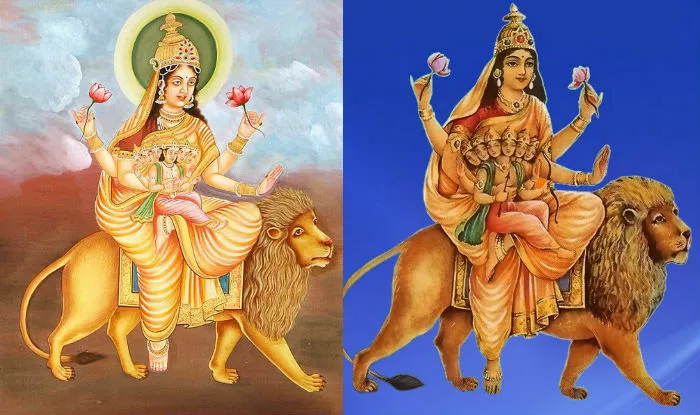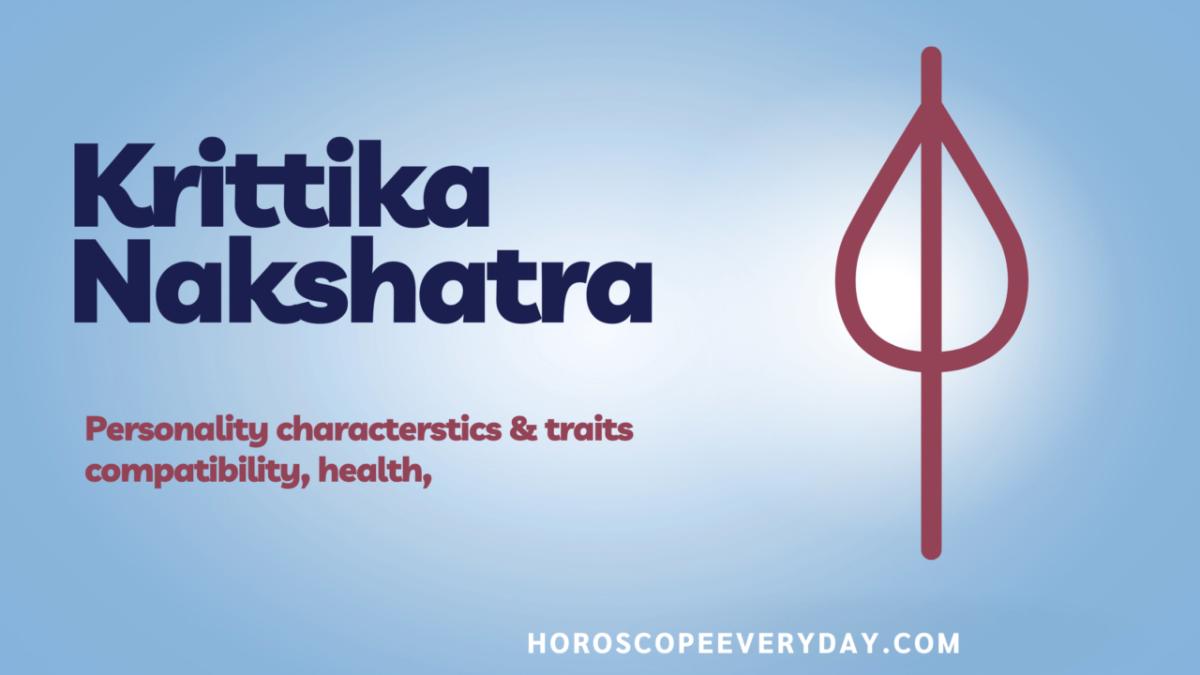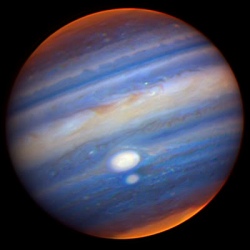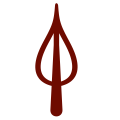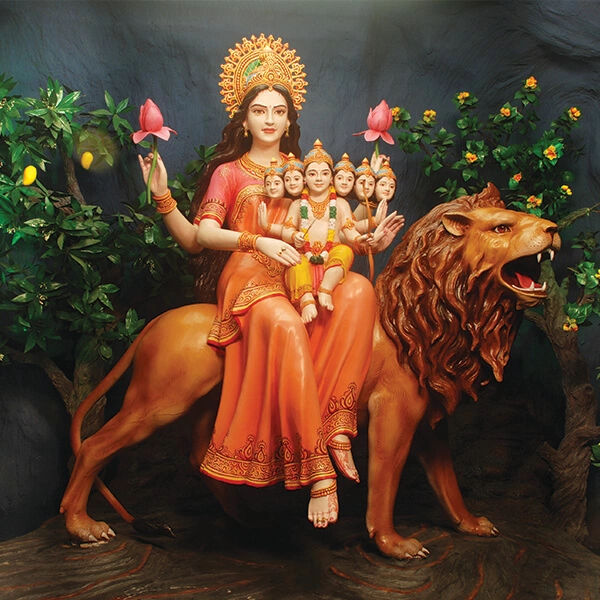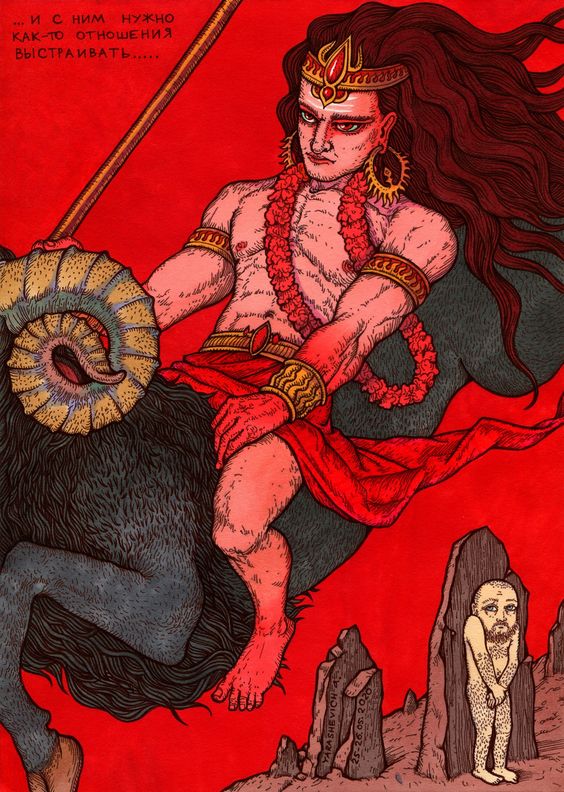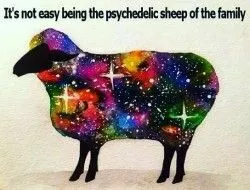#KRITTIKA #NAKSHATRA
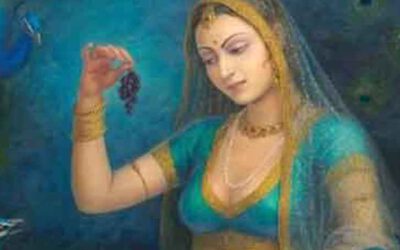
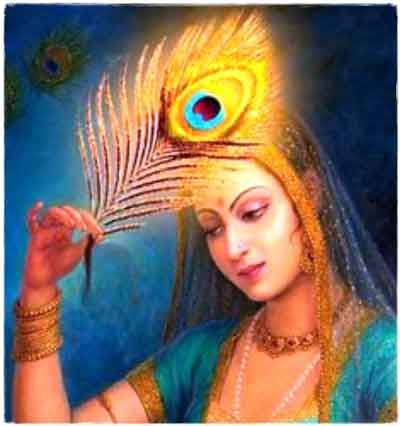
Krittika Nakshatra translates as ‘the #cutting #star’. This Nakshatra spans Aries and Taurus. Its ruling planet is the #Sun and its presiding deity is #Agni, the fire god.
The #Pleiades is the star constellation of this Nakshatra. They are the 7 mother stars, who as legend tells us, mothered #Kartikaya, the warrior god of Mars who fights and battles to establish #cosmic# justice.
On the Dark-Moon ritual night of Shuni Jayanti, the Moon will be in the lunar house of Krittika. In the year 2021, Saturn is in a place of power, as he is in his very own of Makar Rashi (Capricorn). The next time he will be there, will be in 12 years hence.
We have a particularly strong planetary focus on this ritual day for the energy of Saturn, Mars and the Sun are at play – in the India astrological wisdom the Sun is considered part of the Navagraha, the nine planets, along with the South and North Nodes of the Moon.
These 3 planets are the hard teachers that carry the heaviest and most valuable lessons to us.
Furthermore, we have Surya Grahn – the Solar Eclipse.
The Shadow entity Rahu is in force at the solar eclipse. Ketu also aligns to the dark Moon time of opening the door to ancestral forces.
To say that
this is an extremely potent
ritual day
would be an understatement.
At such potent energy junctions the ancient Yogins have advised to take advantage of the portal to the depths of the self that is offered.
Fasting and staying indoors is prescribed for eclipses by Tantrics.
Saturn is the protector of the feminine. In the stories he burns the sun to blackness in honour of the forces of the Shadow and the feminine. Remember that his beloved is Damini, the mistress of all feminine arts, and another aspect of her is Neela, the sapphire woman who is so close to him, that she lives within him.
Neelam is a Saphire and it is her stone, interestingly, it is said that a Sapphire magnifies the power of Shuni.
This is a Time when the deep-most Saturnian feminine aspects in us are revealed and drawn out by the shadow forces of Rahu and Ketu through Mangala (Mars)
Visually the form of Krittika Nakshatra constellation of Pleiades bears a striking similarity to the 7 stars of the Saptrishi (Big-Dipper). We will look deeper into why this is as this text unfolds.
Legend tells us that the 7 Krittika stars were once the lovers of the 7 Saptrishi stars and dwelt with them in love.
The Saptrishi are described as the 7 wise men. Fiery intrigue ensued when Agni fell wildly in love with the seven Krittika star women. The result of the intrigue was that the Krittika star women became cut off from their former lovers and moved to another portion of the sky.
They retain the similar shape of the constellation but exist light-years-of-love apart from their former loves. They literally are cut off from their past loves. Kritt, contained in the word Krittika, literally means ‘to cut’.
The Krittika are the sharp cutters prone to fiery, sharp, burning and singing extremities of action.
This star constellation brings us the teachings of fire and its wise handling.
Fire requires fuel. Fire extracts the essence from fuel it transforms, while providing heat and light. A good relationship to fire and the laws and principles of fire is needed for psychic and physical health.
The spiritual work with fire, and the study of the principles of fire, is not an intellectual pursuit. It is a deep investigation into the nature of the laws of energy itself.
The forces of Krittika Nakshatra functioning well, in her sevenfold power, makes one powerful and gives the fuel of fire. When we have fire, we can spread it through our lives. The seven stars of the Pleiades relate to the 7 fires in the 7 chakras.
These 7 star women are the 7 Shaktis of each Chakra.
How we handle
the power of fire
is paramount
in both spiritual
and physical life
Malfunctioning Krittika energy is the opposite of living well. When our relationship to the 7 flames of the Chakra’s is not healthy, then the laws of fire are to be considered. Establishing spiritual rapport with the 7 mother stars of Krittika Nakshatra, gives birth to the corresponding flames in the 7 Chakras.
Upon the Dark Moon that is upon us in the Nakshatra of Krittika, the fires of chakras are called from us to burn in the last dark moon of the waxing half of the year.
When our relationship to Krittika malfunctions, we have that feeling of being burned out, feeling hot and itchy but essentially tired and lacking in power.
We sometimes might see that we switch between these states of healthy fire and burning-out, or sparking-out.
Fire can either make us smooth, warm and enduring, or nervous, restless and rushing – these latter 3 are the quality of a weak connection to the Laws of the Flame.
This is the fighting to stay aglow, reaching hungrily for scraps and twigs to effectively stay aglow.
Which scraps, twigs do you reach for when your fire burns out of hand?
How do you light your fire when it’s burning cool?
How do you cool it when it’s burning hot?
Fire becomes expansive with plenty of fuel behind it. A well-considered rhythmical supply of fuel in backup is part and parcel of keeping the stove going. This applies in a spiritual sense, as much as in a household sense.
We wouldn’t by choice be reckless about a supply of winter firewood, if we lived by the stove. Are we equally as conscientious with the supply of spiritual firewood? Or maybe we believe such things are of little import?
For the Tantric, the spiritual fire is of great importance. The laws and principles of fire are a primary study for the Tantric practitioner.
Knowing all about how to generate power and spiritual propulsion is a question of understanding some obvious but easily denied laws of fire.
Honouring the laws of the flame makes us powerful, effective and royal in all areas.
Let us consider the nature of Krittika Nakshatra by looking at its ruling deity who is the fire god Agni.
Agni is the deity of Krittika Nakshatra.
His name means ‘fire’. It also means ‘foremost’. Indeed Agni’s fire plays a foremost part in many Indian rituals and rites of passage. Birth is commemorated by the lighting of lamps. Weddings involve 7 circumambulations around a sacred fire, each circumambulation representing the taste of the flame of each of the seven chakras that Agni tastes with his 7 tongues. It is also Agni who conveys the dead across the sea of life at the time of death, in his presence in the funeral pyre. Indian culture has always burned the dead and never buried them.
Agni has 7 tongues of flame and has a voracious appetite for experience.
The scriptural stories often tell how he suffered indigestion because of his over consuming habits. He rules the digestive fire.
Agni’s appetite for everything is vast. A single woman was not enough for him. He fell in love with all the 7 Krittika star women (Pleiades) who were already married to the 7 Saptrishi’s (Big Dipper).
Agni is the fire of experience that is drawn to experience and taste all things.
The seven Krittika’s represent the 7 Shaktis of the 7 chakras. Agni has 7 tongues of flame that long to taste in all 7 directions.
One specialism is not enough for him, he longs to taste the essence of life in all its divisions.
Awareness of time, along with the awareness of our capacities within the realm of time is needed if we are to taste far and wide. Without this awareness, indigestion and overstimulation of a psychic nature can occur.
Without the wisdom of timing, and without selecting a well measured and well considered channel for our fire, we can lose the wisdom and geometry of rhythm, and risk scattering and dispersing our energies with little outcome.
Of course, fire does not care to hear this, it couldn’t care less for well proportioned considerations. Fire likes the gear of action. Fire likes to put itself out with only gasoline.
The solar force is disproportionately pronounced in the world culture in which we live. The time we spend in the light and in solar pursuits, usually outmeasures the time given to the cooling night forces.
An extended period of light through electrical means, overstimulates the solar plexus and arouses active energy within us.
An over emphasis of fire in our nature, is an imbalance that runs the risk of eclipsing the receptive night forces, this can put us out of touch both physically and spiritually with the nourishing forces of reception and femminity.
The teaching of Agni is to balance the feminine and the masculine energies. Although Agni is often described as being male, he has androgynous qualities, as we shall soon see.
The heat and burn of fire is attractive and stimulating, but too much fire spread too far and wide creates superficiality. When the soul is drawn into the realms of superficiality it seeks ever more fire and experience to fill its empty gaping pit of hunger.
Seeking action and life experience might easily become a motto for the experience-hungry-fire that, in actuality, is not really driven by wanderlust, but rather by its own emptiness.
Heating fires abound on all sides. Coffee is served on every corner and sugar saturates the modern diet and creates unnatural fire in the system.
Music to stimulate the life rhythms is hard to escape in the metropolis.
Even fast-track spirituality is available in sensationally effective courses, with abundance of exotic plants offering quick realisation in the spiritual market place.
At the extreme end of fire we have chemical intoxicants and substances that stimulate the senses and give the illusion of equipping one for life when, in fact, the effects are rather different and, in some people, turn them into a frantic aggressive person.
The same could be said in some measure, of all the above listed things that feed the flames of an unnaturally inclined solar-dominant word-culture.
The price of all these fast measures, cited above, is quite high upon the heart, body and soul. Hot and fast seems to be the motto of modernity. But Tantric’s seem to attempt to gain admittance to the sometimes forgotten realms of coolness and slowness.
Solar, active, sunny, bright and fiery are considered powerful words, but their opposite lunar, moony, passive and dark, are all too often designations of insanity, weakness and badness. It does well to ponder the reason why the womb-deep, feminine, cooling, nourishing-night-forces are given such a bad wrap.
A look at the way that the most ancient art and science of childbirth is handled in the modern era will reveal much.

The lesson of Krittika is to be cautious not to lose oneself in the pursuit of wanting to experience life.
To know the right measure of a thing is Wisdom. This would be the fitting axiom for this Star lesson.
Restraint and suppression of desire is not necessarily what is meant here. Rather, harnessing the fire of desire and pausing to get the insight into the nature of fire. Fire spreads and consumes. The lesson of fire is how can it burn freely without becoming destructive?
It takes insight and forbearance to pause in the midst of heat, to see what is going on. Without the pause, fire can rage and consumes. To work effectively and safely with fire, takes a sober knowledge of one’s capacities and the effect of phenomena upon us.
This sounds like a very simple matter-of-fact level of base reality, and it is, but why does this obvious knowledge of measures and effects and causes evade so many?
Might it be that the over-handling of fire in our lives burns the nerve endings of the spirit unto numbness?
A comfortably numb state of being poses no risk. In such a state, fire can be swallowed in a mindlessly rampant and flaming march through the circus of life.
To handle the forces of our lives,
a sober glimpse of reality is required.
Striving sentiments have no place where reality is concerned. To choose wisely and with insight from the variety of ‘isms’ that are broadly on sale in the pick-and-mix shopping centre of life, is needed in the art of handling fire.
Without sobriety, and the insight into the nature of fire, the indiscriminate mix and pick of fiery ‘isms’ can merely create a reality made-up of masks upon the face of reality.
Fire must be denied in order to know its power. Fasting introverts the physical fire and gives us insights into our fiery power. Fasting from activity has been a favourable past time of Tantrics.
In the suspension of action, we glimpse into the nature of stray sparks that throw us and our true will, along with their fire fly motions.
Agni rides upon a ram. His power animal is an indicator of Agni’s active charging power. A ram is a creature that is imbued with a tenacious spirit. The force of the ram burns outwardly in the solar doings that keep us in fiery motion. As we have seen the Tantrics work to discover that the solar force can be introverted with a view to discover the mysteries of the inner spiritual realms.
The golden rams fleece that was dearly sought by Jason and his band of Argonauts in the ancient Greek Odyssey might well represent the secret wisdom of spiritualised fire.
The key to the lessons of the Nakshatras are revealed in their deities, who present an encoded teaching in their being.
Each deity has a Vahaan with them. This is a power animal that represents their essence. By studying and meditating upon the animal connected to the Tantric deities we get further insights. Agni rules the digestive fire and transitions between realms from this solar station.
The ram is a creature with an interesting digestive system. It is well known that they can eat and digest almost anything, including thorns, wood and other normally inedible substances. Rams express a powerful digestive tenacity. They have the ability to swallow large clumps of wood and store them, only to later regurgitate what they ate and chew on it some more, and again sending it back into one of their 4 stomachs. Just like fire that extracts the essence from something, rams are highly refined extractors of essence. This gives them a tenacious enduring spirit.
This holds a lesson for us, if we carefully consider the symbol.
By being very thorough about things and chewing continuously on the phenomena that life feeds us, we generate great power and endurance in ourselves. This is the power that awakens Kundalini and can take us deep into the spiritual realms.
It is known that rams and their relative species can climb to mountainous heights that few can reach.
The secret potential of the ram is to extract the most hidden essence from something. The Ram in us that has not touched its potential might scoff things down and extract nothing nutritious from its existence. Tantrics honour the god of fire by honouring the ram that he rides upon. They honour him by chewing carefully on all experience.
To swallow blindly
is the path
to spiritual indigestion.
Agni is the masculine fire force in its purest form. Agni longs to know the feminine in all her Chakric aspects. He literally burns for the feminine. He can’t help falling in love with the feminine mysteries. The 7 Krittikas are also known as the 7 Matrikas (mothers), which are probably at the root of the word Matriarch.
As already mentioned, they are the Shakti of the seven Chakras. We are dealing with a powerful feminine star constellation that spiritually exerts an impact on the 7 chakras through interacting with the 7 glands of our glandular system.
The 7 Matrikas
can be thought of
as 7 types of desire.
Agni has two heads that point to the dual nature of his being. His nature is fire, and fire has two expressions. One is heat and the other is light.
We see these expressions clearly expressed in fire and in solar force.
His two heads also represent these two aspects of the fiery Manipura Chakra.
Agni is the jewel in this Chakra. Manipura literally means place of the jewel.
He rules over the Manipura Chakra of the Solar Plexus with his dual nature, receiving light nourishment and alchemically turning it into the expression of heat. Agni is a synonym for the digestive fire in which he dwells. The Solar Plexus Chakra receives the light of the Sun and expresses the heat of Mars. This brings us to another fiery deity connected to Agni and the Krittika constellation.
Kartikaya is the active expression of fire. He is the heat of Mars. Kartikaya, or Krittikaya, takes his name from Krittika. They are the mothers who raised him, as we will see in the next section. He is pure hot heat. So hot in fact that even the river Ganges could not hold him.
Kartikeya is the 7 day old child, who was foretold would save the Devas from destruction at the hands of the Asuras. Yes 7 days old, so powerful was he.
The story is complex and comes in several variants. Here we will simplify it to the basics and set aside some of the interesting and numerous details for another place.
The Devic world was under threat and there was no being powerful enough to save them. A child born of Shiva and Shakti would have the necessary power.
Kartikeya has more than one mother. He was born of Shiva and Pharbati’s love after aeons of effort and many celestial interventions. Yet Kartikeya grew in the womb of Agni and was raised by the Krittika star mothers. The root of Kartikeya is Kritt (to cut), he is also called Krittikya. The child of the Krittika.
Agni is usually designated male, but he has a dual nature, symbolised by his two heads. Agni is actually Androgynous and carried Kartikeya in his womb, but the embryo was too hot for him to handle, and it almost finished Agni off.
Agni survived somehow and Kartikeya was raised by the Krittika star mothers.
That the star mothers could handle Kartikeya’s heat is an important point in understanding the true power of Krittika Nakshatra. Kartikeya was multi mothered and multi headed.
With the force of Krittika Nakshatra behind him, no battle was too great for him, even though he was only 7 years old.
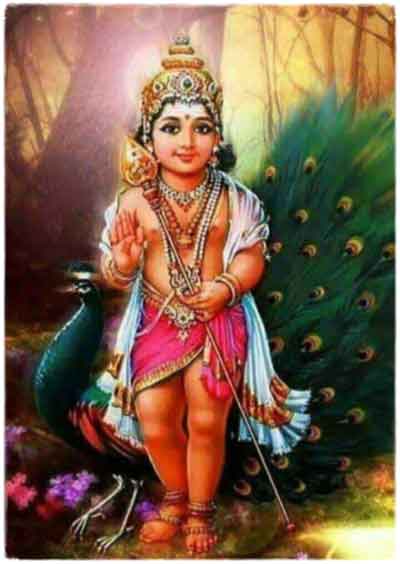
#Kartikeya was a ferocious force that set the cosmic order back in balance. On his 7th day he fixed things so that the Devas could once again rest from the persecution of the Asuras.
Suffice it to say, he grew to be the Martian Lord of Battle.
He rides on a peacock and burns with the active force of a warrior.
The peacock is the bird with the strongest digestive fire of all birds, able to digest all manner of venomous plants, substances and creatures. The digestive fire of the Peacock is unparalleled. It is a creature of profound beauty, with its mystically feathery blooms. It transforms poison into dazzling geometric beauty. Kartikeya does much the same as his Vahaan (power animal), he turns the force of Mars to establish sacred order. He is a king of strategy and the wise handling of potentially destructive force. There are tales that tell of Kartikeya going astray in his use of force, but he learned to handle it and channel it wisely as he grew.
Agni is a sex god-dess, Agni is the mistress of reception of power for the female. But Agni is also the master of the force of ejaculation for the male.
We have seen that Agni’s passion could only be satisfied by 7 lovers. His love endures and charges with the force of his a ram.
Agni yearned for the Krittikas and was in danger of destroying cosmic order, until his longing and passion was remedied by Svaha.
As we have seen, Agni is referred to as a male god, when in fact ‘ he’ exhibits qualities of an androgen. His nature is dual, for he has two heads, he is male and female, he is heat, he is light. He is celestial fire, he is earthly fire.
The child of Shiva was destined to be the only saviour powerful enough to save the Devic realm from the Asuric oppression it was under, and that was leading to its destruction.
Much celestial intervention was carried forward to get Shiva out of his Samhadi (meditational trance) and become interested in anything else.
The story tells that Shiva was so slow and deep in all things, that his love making with Shakti continued for aeons. The Devas were getting so inpatient at suffering the persecution and torment at the hands of the Asuras that, one day, they all gathered together and decided to pay Shiva a visit and tell him to hurry up.
It happened that, in the exact moment that Shiva was about to ejaculate, they stormed their way into his grotto in the mountainous expanse of the Himalayas and caused shock to the Lovers at the very moment of climax. The seed of Shiva was not expelled into the womb of Shakti, but cast upon the walls of the cave.
As Shiva ejaculated all over the cave walls he was in a divine rage for being disturbed at the wrong moment. The Devas looked on in despair, realizing what they had just done.
Shiva’s wrath reached unbeknownst scales of rage and imbued his seed with a fire so hot that it penetrated and melted the mountainous earth.
The seed of Shiva is said to have sunk into the bowels of the earth and created mines of silver and gold.
Shakti was furious at the interruption, and the Devas knew they had really seriously messed up by their inopportune timing.
They begged Shakti to gather the seed into her womb but she was in a rage and refused.
The force of Shiva’s ejaculation was so strong that its fiery expulsion had summoned Agni who had taken a drop of it into his womb. Agni carried the child who became Kartikeya, until the Krittika took over the role of motherhood. Some accounts tell that Shiva’s seed was mixed with Agni’s own seed after his numerous lovings with the numerous forms assumed by the shape-shifting women that was Svaha.
Indra, the king of the Devas, is famous for ever fearing that someone will usurp his throne. When Kartikeya was born, Indra saw that Kartikeya was a force beyond measure and that he might be able to take his throne away.
Indra, we may add, is covered with a 1000 vaginas because of his passion for the feminine. In each Yoni is an eyeball with which the paranoid Indra watches from all directions, in case someone might be able to claim his beloved throne.
And so the Yoni covered lord of the Devas sent the Krittika goddesses to poison the baby Kartikeya. Even though Kartikeya was the one meant to save Indra’s Devic Kingdom. Indra feared the loss of his throne more than the destruction of his kingdom.
It is easy to call the Krittikas a motherly beneficiary force, but they have a fierce side. Many texts and depictions relate them as wild and witchy child-consuming goddesses.
As they went to follow Indra’s orders and destroy Kartikeya, their hearts melted upon seeing the child. Kartikeya overtook their hearts by his Martian power and magnitude and inspired their maternal instincts.
And so they took him as their child and mothered him.
Kartikeya turned out to be a Martian force who was too busy with battle and strategy to be interested in Indra’s throne, so Indra was able to relax and enjoy his Yoni, Soma and legendary romance.
The 7 Mother Stars of the Kritta constellation are in a portion of the astral plane, which gives form to human souls upon their last junction to incarnation upon the earth plane. The Saptrishi constellation of the Big Dipper can be said to give the form to the mental and causal bodies of the soul, whereas the Krittika of the Pleiades, give birth and form to the astral emotional and subtle bodies that more closely connected to the physical plane.
The Mother stars are the last star junction the spirit crosses until it comes to the plane of Bhumi (Earth) where it is physically birthed by the Mother.
The myth shows how the Seven Mother Stars separated from the 7 Rishi Stars. This manoeuvre created a bridge from the spirit realms to the Earth. This happened in a previous Manvantara (inestimably earlier age). This created a linking of the causal/mental plane to the astral/earth orbit, through a bridge like connection from the 7 mothers to their once beloveds – the 7 Rishis.
An autonomy between the astral and the causal is something that is built through the astral thread known as the Antankarana. This thread exists within the spine and is equally a thread that connects the mental/causal plane to the astral, and furthermore to the earth, through the intermediary of the stars we are speaking of.
By bringing the 7 mother elements into balance we bring a balance to the Chakra in the body, astral and mental/causal levels. The seven mothers are important to balance and bring into harmony, if we are to establish connection between the various planes upon which we exist. We can exist in an unconscious way upon some planes until we take birth there. This birth goes through the seven mothers who preside over the astral plane.
The Krittikas are the mothers who from the astral level give form to the 7 physical Dhatus (body constituents) of bone, marrow, muscle, fat, skin, blood, Bindu in the male, or Rajas in the female. The 7 mothers are the essence of astral energies that live behind, and the manifest in the Dhatus that express on the earth plane.
Agni fell intensely in love with the 7 stars of Krittika, known also as the Matrikas. The seven star beauties that Agni longed for were the lovers of the Saptrishis. Sapt means ‘seven’ and Rishi means ‘seer’, they are the 7 star teachers of the Big Dipper star constellation. It was the Saptrishis themselves who summoned Agni by their Tapasya (fiery invocations).
Agni fell profoundly in Love with the 7 star goddesses of Krittika Nakshatra because of their brightness and luminosity. Agni is their opposite. The 7 Matrika star goddess’s represent the cooling creative fire of Tejas, and Agni represents the heating, consuming and destroying fire.
The balance
of these two types of fire
is the way of Tantric Wisdom.
These fires belong together as they balance each other, but at the same time they are opposites that repel and cancel each other out, much the same as the dance between night and day, cold and hot.
Agni became depressed as a result of the star beauties being unavailable. He even resorted to watching them clandestinely through the flames of the hearth. Their cool bluish glow aroused magical wonder in his heart of red flame.
Agni’s Love for seven star beauties of Krittika was so great and so intense, but it was unrealisable because they were already the lovers to the Saptrishi star sages.
Agni could not bear it any longer and he fled in flames from the celestial spheres.
With his heart ablaze he sung his way through the astral realm of the stars in the anguish, desperation and the sorrow of a love that was not to be. One of the names of Agni is Vahani, which means ‘to fly with the wind’.
Agni escaped to the earth plane and became the first fire here. His presence threatened to consume the entire earth.
Meanwhile, up in the world of the Stars, things had gotten barren for the Krittika beloveds of the Saptrishis. The fire had literally gone out without Agni’s presence.
It had been the invocation of Agni by the Tapasya of the Rishis that had kept the flame of love burning strongly. The Rishis became impotent old wise men that the their beloved began to suffer after Agni ran away to the earth plane.
The Saptrishis were now only fit for writing and spreading scriptural knowledge. And so they started to write and edit thoughtful texts for spreading throughout the galaxy. The once hot lovers, who had been aflame with the fires of wisdom, had become a grey ponderous bore.
“A long winter
Along winter
The sun within you,
will turn into a tongue of flame
The kiss you dream of,
will shimmer like the summer rain.“
Tongue of Flame – Transglobal Under
Back on Earth Agni’s sorrowful tears were burning strong as the flames of love burned in his fiery heart. The Goddess Svaha found him weeping fiery tears in a forest made barren by his laments.
Svaha fell in love with Agni for his intensity. Svaha is a goddess who has the ability to shape-shift. When she realised the cause of Agni’s lamentations she changed her form to look just like one of the Krittika star goddesses, and together with Agni she entered into rapturous union. Their love making stayed aflame for aeons, never dwindling. Svaha transformed herself into the other Krittika stars in sequence, and Agni stayed engaged in fiery kisses with his seven tongues for aeons long. One of Agni’s names is Saptajihvi, which means ‘the one with seven tongues of flame’.
Agni was overjoyed as his wildest dreams were realised. His deepest burning wish was being eternally satisfied.
In the end Agni discovered that Svaha was behind the illusion, as she was not able to completely shape-shift into the 7th star beauty known as Arundhati. Arundhati was so devoted to her Saptrishi Lover that the force of her love would not provide sufficient illusionary astral covering to be replicated.
Agni did not revolt and was quite happy with what fate had given him. He loved Svaha for the chemistry that they had together. Svaha was imbued of pure Tejas by the power of her Love for Agni. Agni and Svaha were thereafter always together.
One may note that in many of the fire rituals of India, both Tantric and orthodox, the name Svaha is uttered, as mantras and offerings are given into a ritual fire.
Svaha being the cooling Mantra that cools the hottest element of fire, so that it can be alchemically converted into Tejas, that is, into a psychically workable and handleable form. The story encapsulates this principle in the way that Svaha is able to calm Agni’s fiery tears from becoming all-consuming.
Intrigue ensued when the Saptrishis got word of the escapades of Agni. They didn’t know the full story as they had lost their penetrating insights into matters of the heart. Accusations of infidelity were coldly thrown at their Krittika lovers.
The Rishi’s secretly hoped to rouse Agni once more by their angry displays, but all they succeeded in doing was to distance themselves from their once beloveds.
The Krittika beauties cut away, as the flame of love no longer burned. They travelled to another part of the sky, many light years of love away, leaving the Rishi’s to their books. The Rishi’s didn’t much notice, as without Agni on the scene they were bereft of fire and were only good for the books.
As the cut to their former lovers was made, a bluish cloud of stardust formed and surrounded the Krittika. This sapphire cloud can be seen to this very day. The cutting away, earned them the name Krittika – Kritta, literally meaning ‘to cut’.
And so we see, there was a time when the 7 Krittika beauties and the Saptrishis existed beside each other as Lovers. But that time is no more. However, if one looks closely at the two star constellations, it can be seen that they still have a resemblance to each other. Could this suggest that the form of true love never dies?
https://www.ancient-tantra.com/krittika-nakshatra/
